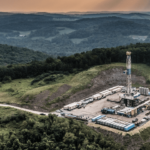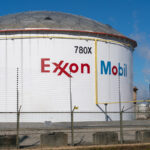An Exclusive Interview with CPE’s CEO Fred Callon
Callon Petroleum (ticker: CPE) became a pure-play Permian Basin E&P no more than one year ago, but its efficiency in the United States’ greatest oil producing play is apparent. In a news release on February 5, 2015, CPE projects 2015 production to range from 8.0 to 8.4 MBOEPD, an increase of 45% compared to 2014 guidance of 5.6 to 5.7 MBOEPD. The company projects Q4’14 volumes at 7.2 to 7.3 MBOEPD, and expects rates to be 15% higher by Q4’15.
Total proved reserves also more than doubled on a year-over-year basis to 33 MMBOE, of which 55% are classified as proved developed producing. Expenditures, on the other hand, are projected to decline by as much as 30%. CPE’s 2015 budget is established at $150 to $165 million, down from 2014’s budget of $215 million.
“This is exactly what we envisioned when we began our full-scale transition to the Permian four years ago,” said Fred Callon, Chairman and Chief Executive Officer of Callon Petroleum, in an interview with Oil & Gas 360®.
|
EnerCom’s E&P Weekly Report (89 Companies) |
||||
| Capitalization Size |
# of Companies |
Median Debt/Market Cap | Difference | |
| 9/26/14 |
1/30/15 |
|||
| Large |
22 |
23% | 33% |
-10 |
| Mid |
22 |
49% | 82% |
-33 |
| Small |
23 |
78% | 169% |
-91 |
| Micro |
22 |
59% | 214% |
-155 |
Well Positioned for the Downturn
Callon has traditionally been very protective of its balance sheet, which is generally against the grain of most small and micro-cap E&Ps who take on debt to fuel growth. As illustrated above, the smaller companies have been hit very hard by the commodity downturn. Looking back on Oil & Gas 360®’s “Balance Sheet an Asset for these Small-Mid Cap E&Ps” just three weeks ago, the debt to market cap percentages for large and mid cap E&Ps have both decreased (by about 3%) while the levels for small and micro cap E&Ps continue to grow (by about 14%).
Callon, unlike many of its peers, is not financially strained in the new commodity environment. Its first debt is scheduled to mature in seven years and less than $30 million is drawn on its $250 million credit facility. Its debt to market cap percentage is 34% in EnerCom’s E&P Weekly for the period ended January 30, 2015, ranking seventh out of its 22 micro-cap peers. If the small-cap E&Ps are included, CPE ranks 12th out of 45 companies. Keep in mind the majority of these smaller companies, particularly the micro-cap group, are focused on less popular plays and few have established themselves in a prominent oil play such as the Permian Basin.
“Our operating team is well seasoned and has been through several of these cycles, so they’ve been very proactive,” said Callon. “We’ve been working with our service providers and reduced costs by 15% to 20%, which really give us reasonable rates of return in the current environment.”
That includes CPE’s revamped hedges, which Callon pursued to mitigate price risk. “Our hedge position locks in the right returns for our shareholders,” he said.

Operations Overview
Callon plans on continuing its two-rig Permian program in 2015 and expects to place 30 gross (23.7 net) horizontal wells online, all from pads. The Upper and Lower Wolfcamp B formations will be targeted for 24 of the gross wells, 10 Upper wells slotted to be drilled in Midland County. Five wells will be drilled in the Lower Spraberry and one will be drilled in the Wolfcamp A to round out the 2015 operational plan. The company currently has 51 producing horizontals in the region.
The company announced its initial Lower Spraberry wells returned initial production rates of 891 BOEPD, and the early returns on its Casselman pad is promising. “The Casselman was part of last year’s acquisition, and the results we’re seeing are better than the type curve,” said Callon. “We aren’t surprised because that’s the reason we made the acquisition, but we’re very pleased with the results.”
CPE estimates its 2015 drilling program will yield average returns of 25% based on long-term realized oil prices of $55/barrel. Its net acreage position of 18,062 acres is largely held by production and the company estimates only three gross wells are obligated to be drilled. The control allows CPE to manage its own growth pace and will continue its artificial lift program, which restricts flowback and is more of a “slow and steady” approach. CPE says the method contributes to shallower production declines and can defer volumes – a key element if oil prices recover later in 2015.
Important disclosures: The information provided herein is believed to be reliable; however, EnerCom, Inc. makes no representation or warranty as to its completeness or accuracy. EnerCom’s conclusions are based upon information gathered from sources deemed to be reliable. This note is not intended as an offer or solicitation for the purchase or sale of any security or financial instrument of any company mentioned in this note. This note was prepared for general circulation and does not provide investment recommendations specific to individual investors. All readers of the note must make their own investment decisions based upon their specific investment objectives and financial situation utilizing their own financial advisors as they deem necessary. Investors should consider a company’s entire financial and operational structure in making any investment decisions. Past performance of any company discussed in this note should not be taken as an indication or guarantee of future results. EnerCom is a multi-disciplined management consulting services firm that regularly intends to seek business, or currently may be undertaking business, with companies covered on Oil & Gas 360®, and thereby seeks to receive compensation from these companies for its services. In addition, EnerCom, or its principals or employees, may have an economic interest in any of these companies. As a result, readers of EnerCom’s Oil & Gas 360® should be aware that the firm may have a conflict of interest that could affect the objectivity of this note. The company or companies covered in this note did not review the note prior to publication. EnerCom, or its principals or employees, may have an economic interest in any of the companies covered in this report or on Oil & Gas 360®. As a result, readers of EnerCom’s reports or Oil & Gas 360® should be aware that the firm may have a conflict of interest that could affect the objectivity of this report.







